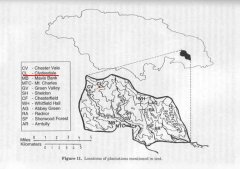Huilan & #12539; Lerusa Manor, Colombia
Basic information of manor
Origin: Huilan Lerusa Manor, Colombia
Tree species: old varieties Bobang 60%, Tiebika 40%
Altitude: 1550 m
Taste: sweet pulp, mellow, depth, excellent sense of balance
The manor does not use a high-speed and convenient dryer, but uses the traditional SUN DRY drying method, acid and alcohol bitterness get the maximum concentration and sublimation. The highest grade manor coffee in Huilan, a famous region of Colombia.
In the manor since 1950, the current manager, Mr. and Mrs. Lu Gasu, have devoted their enthusiasm and dedication to the management of the manor.
In the past 12-13 years, in order to increase production and income, Colombia, a big coffee country, has rewarded improved new varieties in the form of national policies (high fruit rate, strong resistance to diseases and insect pests, and low planting costs). It is even semi-mandatory to cut down old varieties and change them to improved varieties in some areas. Under such conditions, in order to protect the old varieties with small yield, easy to diseases and insect pests, but with high quality, the manor has been firmly rejecting the government's request for improved varieties, so that today's old varieties Tibica and Bobang have survived.
The manor does not use convenient and efficient sorting machine, but to maintain the traditional laborious fermentation, daylight drying method. In order to protect the shade-loving trees from the strong sun, shade trees were planted around the coffee trees, weeding, irrigation and fertilization management were meticulous.
Important Notice :
前街咖啡 FrontStreet Coffee has moved to new addredd:
FrontStreet Coffee Address: 315,Donghua East Road,GuangZhou
Tel:020 38364473
- Prev

China's first special brewed milk for coffee is on the market
In foreign countries, coffee with milk is a common way to drink, but in China, most people are still unfamiliar with this practice, and a cup of fragrant and nutritious milk coffee drink often has to be handed over to a special coffee shop.
- Next

[Jamaica] Blue Mountain-Conastale Manor
The Resurrector of Coffee No. 1 in the Blue Mountains of Jamaica, Conastale Conastale Farm, existed from 1801 to 1842. From 1801 to 1825, the first generation farmer was Colin McClarty, and the second generation owner was his son Alexander McClarty. From 1825 to 1842, the management right of the farm was handed over to the third generation farmer Alexander Campbell. 1842
Related
- Being chased out of the rain in front of Starbucks?! Store: Sheltering from rain under umbrellas poses a safety hazard
- The white moonlight has changed?! Lucky launches "Big Winter Pear American"
- Hand-brewed coffee three-stage method, high-sweet and universal brewing method to share! What does the high sweet water level of hand-brewed coffee mean?
- What is the difference between raw, refined and full espresso coffee? How to extract espresso and taste good?
- A complete list of coffee bean names and their meanings! What is Yejia Shefi coffee? Where is Mantelin coffee?
- What grade does Arida Manor Kaduai coffee beans belong to? What treatment is Arida ASD slow anaerobic sun exposure?
- The milk tea cup becomes smaller?! Overlord Tea Girl launches a new "Return to Yunnan" series
- Accused of selling counterfeit and high-priced coffee beans! Well-known boutique coffee brand "Oukelao" bowed and apologized!
- How to make espresso dumplings? Can I eat coffee and glutinous rice balls together?
- Save the unformed and stagnant powder cakes in one second! What is the problem with stagnant water in the powder bowl of the espresso machine?

